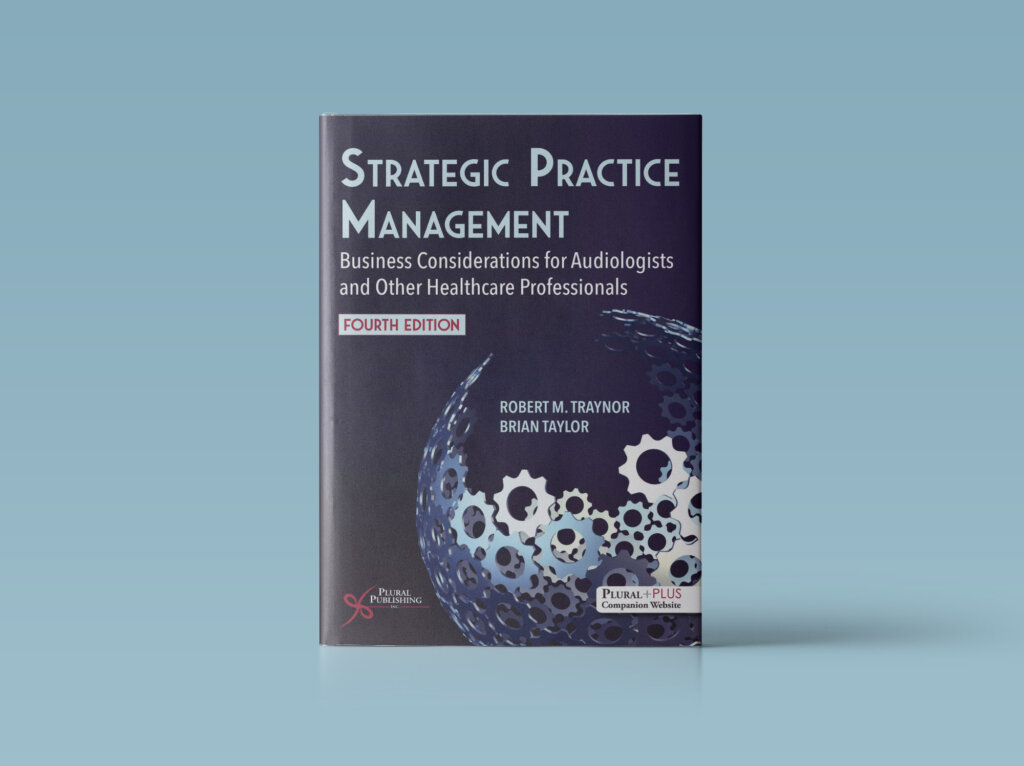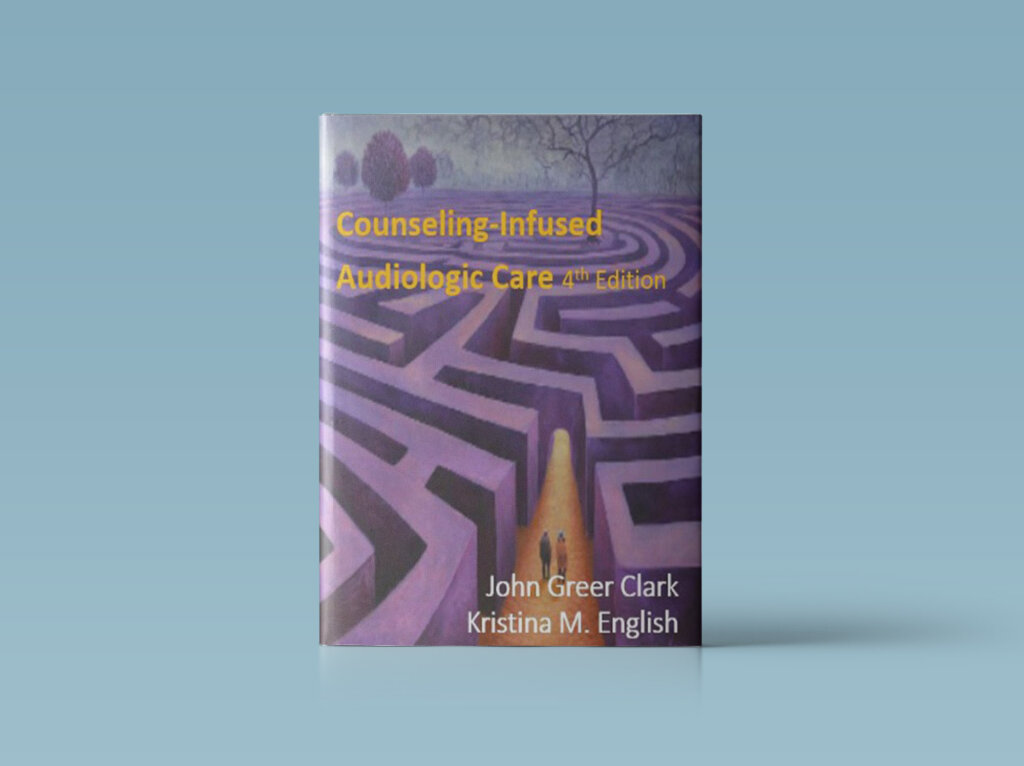Book Review

Strategic Practice Management (fourth edition) by Robert M. Traynor and Brian Taylor
Plural Publishing, Inc. 2025.
Reviewed By: Marshall Chasin, AuD., Editor in Chief, CanadianAudiologist.ca
At 983 pages (and 3 Kg), my first intuition was to flee, much like being chased by a space monster in the movie Alien. But upon opening the book it was anything but a horror film. This is the fourth edition of Strategic Practice Management by Doctors Robert Traynor and Brian Taylor- and despite the similarities on how their names sound, they are not related. Brian Taylor is a newcomer to this textbook and takes over the reins from Dr. Robert Glaser. Both Robert and Brian have been around the hearing aid industry for as long as I can remember, and both are frequently invited speakers to state, provincial, and national meetings. In fact, Robert Traynor (who everyone calls Bob), will be a speaker this fall at the annual conference of the Canadian Academy of Audiology, and he writes a regular column at CanadianAudiologist.ca called “Sound Business Sense”. And this book is not just by them but has contributions from 22 world-renowned clinical audiologists and managers (and 12 new authors in this latest edition) with names such as Doctors Amyn Amlani, Michael Valente, and Kevin Liebe. This in itself underscores the importance of this book in its breadth- with Amyn Amlani being a clinical audiologist with a large Texas practice, Michael Valente from the medical hospital field where he was head of Audiology at Washington University in St. Louis for many years, and Kevin Liebe is the president of the well-known online audiology news and education platform, Hearing Health and Technology Matters.
As discussed in the Foreword, in an entertaining conversation between Gus Mueller and Jerry Northern, this book could not have been written in the 1980s and 1990s. This book concentrates on modern private practice and the roles and duties of clinical managers in the hearing health care field which has really only existed in the last 20 years or so. Not only are audiologists responsible for seeing patients but also on maintaining and growing their clinical practice. At the end of the day, optimal hearing health care is predicated on ensuring that the doors remain open for their clients.
And despite the contributions of this book being from the United States, the information is readily transferable to the Canadian environment.
The book begins with an overview of management and economics, as well as legal considerations and human resources issues in practice management, and discusses competition and employee compensation. It then has chapters on important issues such as accounting and fiscal management, including marketing, pricing, and office management systems. The book then goes on by concentrating on specific vocational work environments ranging from small and multi-clinic private practices, to university and even hospital/medical school audiology practices.
In short, this book is packed full of gems and all of the necessary information that is so important in maintaining and growing one’s clinical practice. I have been in private practice for over 40 years, and it was both scary (about what I didn’t know) and enlightening to see such clinically important information, and all in one book. Even if you own a previous edition, this fourth edition is a must-buy with the addition of 12 new authors.

Counselling–Infused Audiologic Care (4th Edition).
Clark, J. G., & English, K. M. (2025). Inkus Press.
Reviewed by: Joanne DeLuzio, M.Cl.Sc., PhD, Audiologist, reg CASLPO, Adjunct Professor S-LP, University of Toronto
As indicated by the title, this book presents a “counselling-infused” approach to audiologic care that is humanistic, focusing on individuals and their families. The numerous case studies and examples throughout the book help to make the content both practical and relatable. This book is an excellent resource in providing a high number of communication and hearing handicap tools/scales, including one for dizziness and one for tinnitus. There is also a tool for patients to indicate their feelings of being “heard”. The content and information offer plenty of opportunities for self-reflection and growth of practicing clinicians, not only those providing audiologic care.
The five-part section of the book on cultural humility is an excellent start, but something that should be considered for the 5th edition of this book is gender identity/expression. This issue is lightly covered in the book but does not appear until Part 3, and acknowledgement of sexual orientation is lightly spattered throughout the book but within a very narrow context. The two examples provided were both of homosexual male partners. Many people within the 2SLGBTQ+ communities may not be in monogamous or long-term relationships. While sexual identify might seem irrelevant to audiologic services, the perspective presented in the book that communication partners should be included in appointments necessitates that patients feel safe enough to tell their clinician that they are in a same-sex or other non-heteronormative relationship and believe that they will still be treated with dignity and respect in the clinic. Diversity recognition and reflecting on beliefs and biases both explicit and implicit necessitates that clinicians become aware of the privileges they hold, even when they don’t expect or want them. These privileges can and do have impact on the services that are provided.
Something else to consider for inclusion in a 5th edition of this book would be the use of artificial intelligence (AI) in diagnosis, treatment, and prevention of hearing related issues. Emerging studies on medical AI suggest that there are biases at all levels and stages of AI development, which can perpetuate the age-old disparities in health care that disadvantage specific groups such as women, persons who are economically disadvantaged, and non-abled-bodied persons, as well as gender, racial, ethnic, and sexual minorities.
I highly recommend the book and look forward to a more complete exploration of diversity and inclusion in providing counselling-infused audiologic care in the next edition.

Neuroimaging of the Auditory and Vestibular Systems: A Clinician’s Guide
First Edition, Plural Publishing, 2025
Matthew Bush, Margaret N. Chapman, Jennifer B. Shinn, Daniel Zeitler
Details: 316 pages, Full Color, Hardcover, 8.5" x 11"
ISBN13: 978-1-63550-431-6
Reviewed By: Erica Zaia, M.Sc, Audiologist
As a vestibular audiologist, I was intrigued to read the title of this book, which almost seemed like an impossible task to accomplish. Would the editors be able to present neuroimaging of the auditory and vestibular system in a way that was accessible and relevant to a clinician like me? The answer is a resounding yes.
The team of editors embody the nature of trans-disciplinarity required to fully comprehend the auditory and vestibular systems and to care for individuals dealing with hearing, vestibular and balance disorders. With their background and education in Radiology, Neuro-Otology and Audiology, the editors recruited an unbeatable interdisciplinary team of experts from the best institutions in the US to author each chapter.
The editors conceptualized and organized the book and each chapter brilliantly. After a concise and useful overview, the second chapter is dedicated to understanding diagnostic imaging. Various techniques, such as CT scan and MRI, and several protocols that can be tested on each one are defined and described in a clear and straightforward way. More importantly, audiologists will find clinically relevant pearls in this chapter including the best technique to assess common disorders such as a cholesteatoma, infectious and inflammatory diseases such as labyrinthitis and less common disorders such as bone dehiscence.
The following chapters not only review the normal anatomy of the auditory and vestibular system but more importantly present the anatomy through the radiology lens. It is particularly interesting and helpful to study the numerous radiology images in the book, creating a parallel with the medical drawings we are most used to learning from.
The five following chapters are invaluable to all of us Audiologists. Starting from the external ear, travelling through middle and inner ear, skull base, and cerebellopontine angle, reaching central nervous system areas all the way up to the brain cortex, each chapter presents an extensive list of disorders, including definition, symptoms, clinical, audiological and imaging findings, and treatment. It is the most logical, comprehensive and clinically relevant material on audio-vestibular disorders I have read in our field. From various forms of otitis media to mass lesions and cerebrovascular disorders, whether you are in pediatric, cochlear implant, diagnostic, rehabilitation or vestibular audiology practice, there will be something useful for your daily practice in this book.
Table of Contents
Chapter 1. Introduction and Overview
Matthew L. Bush, Margaret N. Chapman, Jennifer B. Shinn, and Daniel M. Zeitler
Chapter 2. Principles of Radiology: Modalities, Methods, and Indications
V. Carlota Andreu-Arasa, Margaret N. Chapman, and Osamu Sakai
Chapter 3. Structure and Function of the Auditory System
Stephanie J. Youssef, Matthew A. Shew, and Cameron C. Wick
Chapter 4. Structure and Function of the Vestibular System
Nicholas S. Andresen, Desi P. Schoo, Lakir D. Patel, Molly A. Wingfield, and Yuri A. Agrawal
Chapter 5. External Ear
Nathaniel Breslin, Michael Achilleos, Johanna Whitson, and Jacob B. Hunter
Chapter 6. Middle Ear and Mastoid
Michael H. Freeman, Joseph M. Aulino, and Elizabeth L. Perkins
Chapter 7. Inner Ear
Janice J. Chung, Amy F. Juliano, and Elliott D. Kozin
Chapter 8. Lateral Skull Base
Mana Espahbodi, Kaden Neuberger, Richard H. Wiggens, III, and Richard K. Gurgel
Chapter 9. Cerebellopontine Angle
James R. Dornhoffer, Paul J. Farnsworth, John C. Benson, John I. Lane, and Matthew L. Carlson
Chapter 10. Central Auditory System
Nathan D. Cass, Amanda G. Davis, and Flavius D. Raslau

